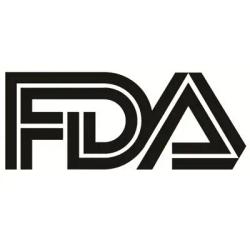
OR WAIT null SECS
NASPGHAN 2025: Odevixibat Shows Sustained Pruritus and Bile Acid Improvements in FIC1 Deficiency
Long-term analysis of the PEDFIC studies presented at NASPGHAN 2025 demonstrated sustained reductions in bile acids and pruritus with odevixibat in FIC1 deficiency.
New long-term findings from a post hoc analysis of the phase 3 PEDFIC 1 (NCT03566238) and PEDFIC 2 (NCT03659916) studies demonstrated sustained reductions in serum bile acids (sBA) and improvements in pruritus among patients with FIC1 deficiency (PFIC1) treated with odevixibat. Data were presented at the 2025 North American Society for Pediatric Gastroenterology, Hepatology and Nutrition (NASPGHAN) Annual Meeting in Chicago, with the abstract authored by Henkjan Verkade, Pediatric Gastroenterology-Hepatology, Department of Pediatrics, University of Groningen, Beatrix Children's Hospital−University Medical Centre Groningen, Groningen, Netherlands, and colleagues.
Odevixibat was approved on July 20, 2021, by the FDA, as well as in Europe, as the first drug treatment option for patients living with PFIC aged 3 months and older.2,3 At the time, approval was based on pruritus improvement from baseline at 24 weeks.
"We have now characterized the responders to ODX with FIC1 deficiency (PFIC1), separately for sBA and pruritus," wrote the study investigators.1
Characterizing response in FIC1 deficiency
The post hoc analysis evaluated outcomes in patients with FIC1 deficiency treated with odevixibat (40 or 120 µg/kg/day) in PEDFIC 1 or PEDFIC 2 who achieved an sBA or pruritus response at Week 24 of treatment. sBA response was defined as “≥70% reduction in fasting sBA from baseline (BL) or sBA ≤70 μmol/L.” Pruritus response was defined as “a ≥1-point drop in observer-reported (ObsRO) scratching score (0–4 scale) from BL," wrote the study authors.
In all, 35 patients with FIC1 deficiency were included. At Week 24 of odevixibat treatment, 5 patients were sBA responders and 14 were pruritus responders. According to study results, "10 of the 14 pruritus responders had a pruritus response independent of an sBA response, and 15 patients had either sBA or pruritus response, or both."
At 96 weeks, analysis demonstrated sustained reductions in sBA and/or pruritus.
Long-term outcomes with odevixibat treatment
According to the authors, “Patients with FIC1 deficiency who responded to odevixibat treatment at Week 24 experienced rapid improvements in pruritus and reductions in sBA that were sustained with long-term treatment.” Overall, “Forty percent (n=14/35) of patients with FIC1 deficiency achieved a sustained, clinically relevant improvement in pruritus; 10/14 of these achieved a pruritus response without fulfilling the stringent criteria for an sBA response," the authors concluded.
These findings reinforce odevixibat’s durable benefit for managing both biochemical and symptomatic burdens in PFIC1, supporting its continued use and evaluation across progressive familial intrahepatic cholestasis types.
References:
- Verkade H, Thompson R, Artan R, et al. ODEVIXIBAT TREATMENT IN PATIENTS WITH FIC1 DEFICIENCY: SUSTAINED EFFICACY, PARTICULARLY IN PRURITUS, IN AN INTEGRATED ANALYSIS OF RESPONDERS (PEDFIC 1 AND PEDFIC 2). Abstract. Presented at: 2025 NASPGHAN Annual Meeting. November 5-9, 2025. Chicago, Illinois.
- U.S. FDA approves Bylvay for patients living with cholestatic pruritus due to Alagille syndrome. Ipsen. Press release. Published June 13, 2023. Accessed November 7, 2025. https://www.ipsen.com/press-releases/u-s-fda-approves-bylvay-for-patients-living-with-cholestatic-pruritus-due-to-alagille-syndrome/
- Yi S, Kim I, Hager R, Strazzeri MM, Garrard L, Matsubayashi T, Mehta R. Food and Drug Administration Approval Summary: Odevixibat (Bylvay) for the Treatment of Pruritus With Progressive Familial Intrahepatic Cholestasis. Gastro Hep Adv. 2024 Nov 29;4(4):100596. doi:10.1016/j.gastha.2024.100596. PMID: 40454003; PMCID: PMC12126724.


